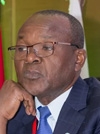
On 25 September 2015, the United Nations General Assembly adopted the 2030 Agenda for Sustainable Development, which includes the 17 Sustainable Development Goals (SDGs) that will represent the development objectives of the international community for the next fifteen years. The SDGs have been adopted to succeed the eight (8) Millennium Development Goals (MDGs), which have expired, having reached the 15-year-long deadline agreed upon at their adoption in 2000. The aim of the MDGs was to tackle the indignity of poverty. They established measurable, universally-agreed objectives for eradicating extreme poverty and hunger, preventing deadly but treatable disease, and expanding educational opportunities to all children, among other development imperatives.
According to the final (2015) MDG Report produced by the Inter-Agency and Expert Group on MDG Indicators led by the Department of Economic and Social Affairs of the United Nations Secretariat, the 15-year effort has produced the most successful anti-poverty movement in history. The report says that since 1990, the number of people living in extreme poverty has declined by more than half; the proportion of undernourished people in the developing regions has fallen by almost half; the primary school enrolment rate in the developing regions has reached 91 percent, and many more girls are now in school compared to 15 years ago; remarkable gains have also been made in the fight against HIV/AIDS, malaria and tuberculosis; the under-five mortality rate has declined by more than half, and maternal mortality is down 45 percent worldwide and the target of halving the proportion of people who lack access to improved sources of water was also met. This global picture is somewhat different in Africa where, despite substantive progress by historical standards, the very low starting point - high levels of deprivation across most goals - from which efforts were made towards MDGs, meant it would be a tall order to achieve the eight goals before the end of 2015.
Related
Building Africa’s capacity to finance its own development
Looking beyond trade and infrastructure programs is critical to successful regional integration
Africa’s hope at Brisbane G20 Summit
Time for serious US-Africa Partnership is now
Whereas African countries registered some good achievements in such objectives as access to free education and access to better quality of water, the continent still lags behind on some key goals such as the halving of poverty on which performances on other goals heavily rely. Notably, most of the MDGs that remained unmet had gender dimensions. Further, lack of financial resources on the continent has contributed to hamper development efforts towards the MDGs.
The SDGs replace and expand the MDGs, not only bringing the number of ‘desirable’ goals from eight to seventeen but also engendering them. Additionally, new goals whose non-inclusion in the MDGs meant the latter would always prove difficult to realize, have been added. For example, the MDG agenda, which contained a very broad objective of poverty reduction, had nothing to say about the long-term socio-economic processes and their complexities. The SDGs attempt to correct this by including decent work and economic growth (Goal 8); industry, innovation and infrastructure (Goal 9) as well as responsible consumption and production (Goal 12).

However, of all its characteristics, it’s the orientation towards inclusiveness and partnerships that really sets the SDGs apart from the MDGs. Whereas over the last 15 years, the implementation of MDGs initiatives has primarily been based on government-led initiatives, the new framework allows for more strategic interactions between a vast array of stakeholders in the development field. Goal 17 recognizes that the Sustainable Development Goals can only be realized with a strong commitment to global partnership and cooperation. This is where the African Capacity Building Foundation (ACBF) – and other capacity building institutions - can really contribute to successfully achieve the SDGs.
There is no doubt today that capacity building in all its forms and dimensions has often been the mother of all missing links in Africa’s development efforts. Africa needs institutional, organizational, and human capacity. Efforts have been made to that effect but there is room for further improvement. Through grants, technical assistance, and knowledge generation ACBF is playing a critical role of ensuring that the continent has the capacity to achieve its goals. ACBF’s vision is that of an Africa capable of achieving its own development. The implementation of the SDGs in Africa can hence greatly benefit from recent work done, and knowledge products produced by the Foundation.
For instance, Goal 2 (Zero hunger) aims to end all forms of hunger and malnutrition by 2030. This is hoped to be achieved by “promoting sustainable agricultural practices: improving the livelihoods and capacities of small scale farmers, allowing equal access to land, technology and markets”. In 2012, the Foundation released its annual publication, the Africa Capacity Report (ACR) with the theme ‘Capacity Development for Agricultural Transformation and Food Security’. The recommendations of ACR 2012 would go a long way in helping African countries enhance their capacity to tackle food insecurity. ACR 2012 identifies capacity gaps and gives recommendations on how capacity can be built within countries to improve the productivity and the economic returns of agriculture as it is key to tackling poverty and hunger.
Similarly, capacity imperatives relating to SDGs 7, 13, 14 and 15 (respectively focusing on affordable and clean energy; climate action; life below water; and life on land) are discussed in an innovative and detailed way in the Foundation’s ACR 2013 on ‘Capacity Development for Natural Resources Management’. The report focuses on what African countries need to do individually and collectively to achieve effective management and good governance of the continent’s vast natural resource wealth. The discussion covers both renewable and non-renewable endowments, with specific focus on forests, land, water, solid minerals and hydrocarbon resources.
The issue of capacity imperatives for SDG 16 (peace, justice and strong institutions) is thoroughly examined in the 2011 ACR, themed ‘Capacity Development in Fragile States’, which reviews the capacity needs of countries as well as the underlying historical, political, economic, cultural and societal elements that have contributed to their current state of achievement. It also looks at the factors that inhibit efforts to address conflict and fragility problems on the continent.
ACBF has also produced a knowledge product that provides technical guidance on gender-based budgeting. This has been instrumental in helping countries move gender-sensitive policies and programmes into action plans in allocation of resources. But the efforts have obviously not been enough as a number of gender-related MDGs have remained unmet – a clear indication of persistent capacity gaps.
It is clear that neglecting the capacity dimensions of SDGs will make it difficult to achieve the goals. We already have a lot to learn from implementation of MDGs. The ACBF has over the past 24 years laid a strong foundation for understanding the capacity imperatives for development in Africa and invested heavily in capacity building.
The message is simple: the emphasis we place on building requisite capacity would define the difference between success and failure in meeting the SDGs on the continent.
Related
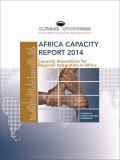
The Africa Capacity Report (ACR) and its supporting indicators offer inputs for decisions on what to support in capacity development. This year the Report focuses on the capacity imperatives for regional integration, a priority area of focus for ACBF. It looks at capacities needed to help move the African regional integration agenda forward.
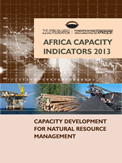
The 2013 Report, the third in a series, focuses on an issue of great importance to Africa: natural resource management. The Report is holistic, yet focused on what African countries need to do individually and collectively to achieve effective management and good governance of the continent's vast natural resource wealth.
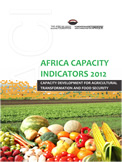
A core message in the 2012 ACI Report is that improving the productivity and the economic returns of agriculture has immediate effects on poverty and hunger in at least three important ways
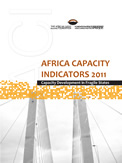
The publication examines the visible capacity development needs of countries, as well as the underlying historical, political, economic, cultural, and societal elements that contributed to their current state of achievement. The publication also investigates the factors complicating efforts to address conflict and fragility problems of countries. This report covers 34 countries and focuses on the challenges of capacity development in fragile environments.


